Optimising for Google Voice Search – Hey Google, give me 3 tips
Note: This is a guest post by Gavin Hirst, copywriter, SEO and content marketing expert at Digital Hothouse in New Zealand.
It seems like we have been talking about voice search for forever. It seems that every year is going to be the year of voice search and we’ve not reached the tipping point….yet.
2018 has certainly been the first full year where it has made sense for companies to start looking at the way they optimise their content for voice search. Of course, some would have jumped on the bandwagon early, when the very first people started writing that voice search was going to be the biggest thing in SEO in 2014 and that’s good for them. Now however is the time when you really do need to start paying more attention.
Consumer Insights
First, let us take a look at the rapid rise of voice search and how this is changing consumer behaviour. As far back as 12 months ago, Google released some interested data through Think with Google.
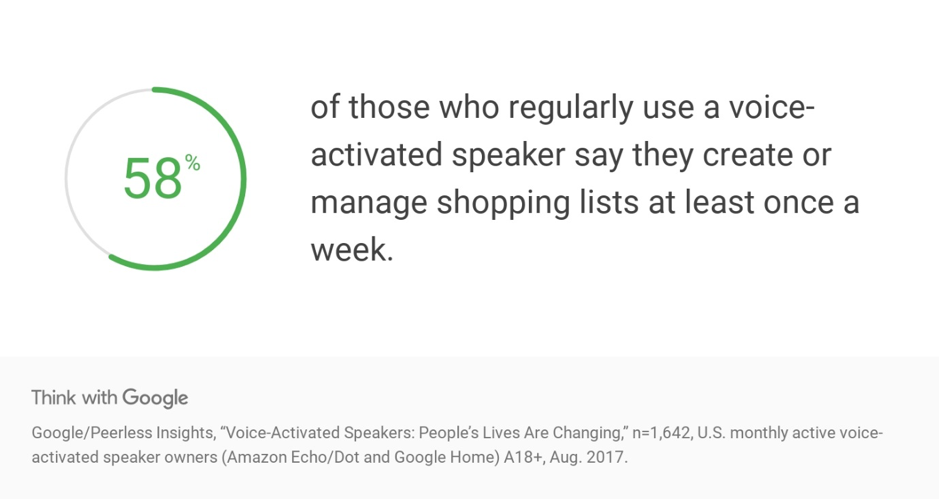
Yep, I’ll admit. I’m one of them. Creating a shopping list using my Google Home is so simple. No need to find a scrap bit of paper. No need to get my phone out. Simply ask Google to add something to my list and the next time I’m at the supermarket, remember my phone.
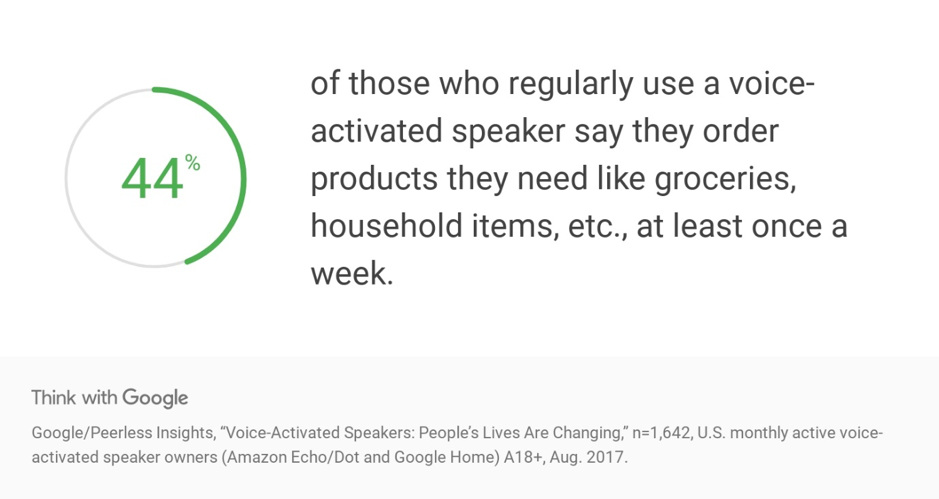
Now, this is not me…yet. I think this is perhaps more common in the US where there is better integration with online shopping, however don’t forget, this was 12 months ago. Times are changing and they are changing quickly. It won’t be long before more and more people feel comfortable and confident ordering their grocery shopping through their home speaker.
These two points alone suggest how far consumers have evolved when it comes to using voice search and the way things are changing.
Consumer acceptance of voice search and home speakers
Whilst we can definitely see there has been a shift in consumer behaviour when it comes to making purchases through a home speaker, the biggest indicator of the acceptance of home speakers as a way of searching for products and services online comes from the following insights:

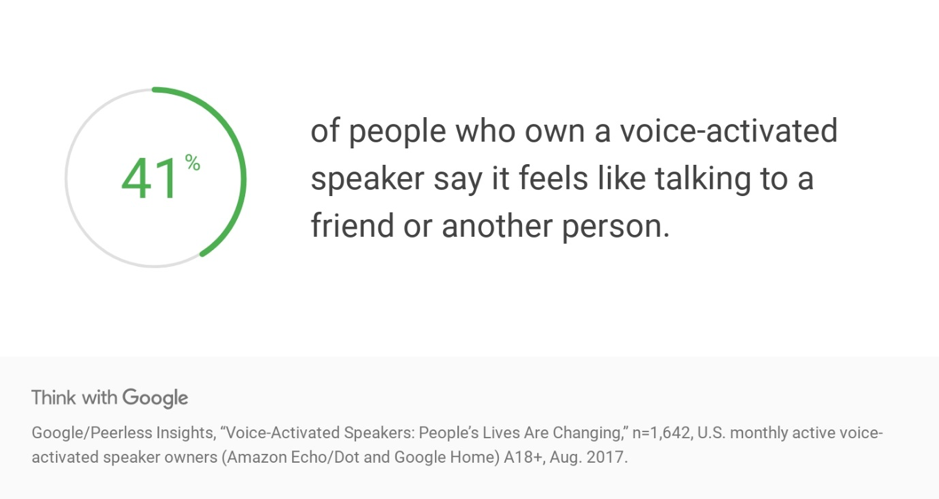
People are starting to not only accept home speakers, but embrace them and the things they can do. If you think about your mobile phone and how personal it is to you, we are going to see a similar pattern emerging with home speakers. If I were to ask you to hand your phone over to a friend and let them look through your search history, I am guessing a lot of you would be fairly squirmish at the thought. We ask things on our phone and in our searchers that we wouldn’t dream of asking even our closest friends and that is how our relationship with home speakers is set to evolve.
Optimising for voice search
Now we are starting to understand a bit more about how voice search is changing consumer behaviour, we also need to know what to do about it. There are already some great posts written about this that go into a lot of detail, however I wanted to cover off the top three things I think you should be doing to optimise your site for voice search:
1. Use natural language
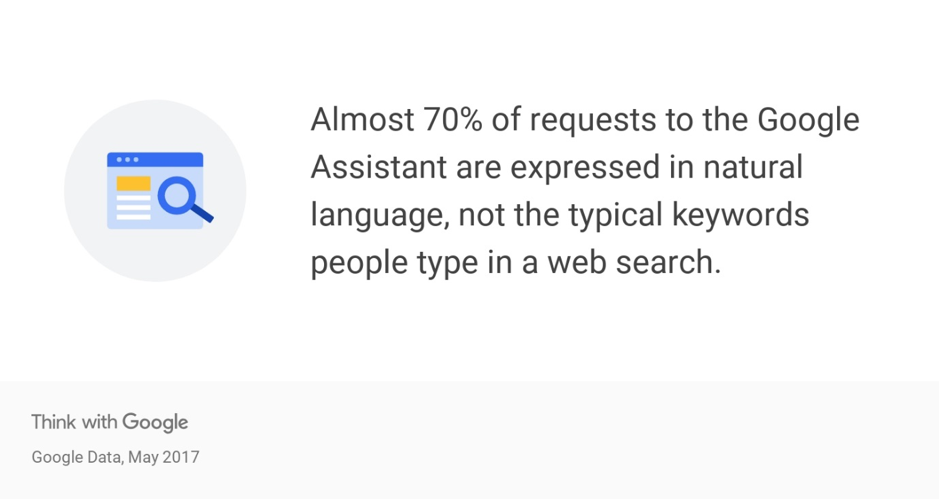
This one is an absolute no-brainer. We’ve been advising our clients to do this for years. Not for voice search specifically, but for a better user experience. People want to feel like they are reading something that has been written specifically for them. Something that is personal. Rather like writing a letter. I recently attended Content Marketing World 18 in Cleveland and had the absolute pleasure of listening to Ann Handley, one of the leading lights in the world of content marketing.
Her keynote was enlightening and one of the biggest takeaways I got from it was her approach to writing a newsletter. Whilst the news you put in a newsletter is important, Ann urged us to focus more on the ‘letter’ part of the newsletter and provided us with a fantastic example of Warren Buffet. When he writes his annual letter to shareholders, he writes it for a very specific person – Doris. By focussing in one this one person, he manages to make the tone of his very important shareholder letter more friendly, open and easy for people to understand.

This is something we could all be doing more of with our content, not just our newsletters. Work out who it is you’re writing for and then take a more natural approach to writing to that specific person and you will soon find that you are using a lot more natural language which the voice search engines are going to love.
If you do want a great example of a great newsletter, I would urge you to sign up to Ann’s weekly instalment, delivered evert week on a Sunday afternoon.
2. Focus on the long tail
I don’t know about you but we are finding ever increasingly that we are getting squeezed when it comes to head keywords. Whether it’s Google themselves, a new SERP feature, an aggregator, a review site, Wikipedia – the list goes on. Where previously we could rank really well for a head term, there are new competitors in the space that aren’t even real competitors. Grrrrrrr.
That’s why for some time now, we have really been delving a lot deeper into the long tail when it comes to our keyword research. Sure, the search volumes are nowhere near as high as some of the head terms, however if we find enough long tail keywords that we can rank really well for, we can certainly make up for the shortfall in search volume from those head terms.
All this is going to stand us in good shape when it comes to voice search. People don’t tend to talk to their home speaker like they would if they were typing something into Google. For example, I’m much more likely to say ‘Hey Google, what were the best movies in 2018’ whereas if I was typing that, I would probably go with ‘best movies 2018’. As we have already seen, people talk to their home speakers as if they are talking to a friend or another person so it’s important for us to do the same in the way we optimise the copy on our pages, in our page titles, in our headings and in our images.
3. Ask questions
One of the main things I have observed with voice search is that people like to ask questions. As we have seen above, they don’t ask questions like they would with a traditional search on Google using a keyboard. They literally ask the question like they were asking a real person.
Therefore, it’s up to us as marketers to ask and answer those questions. Use the full question in your content and then go ahead and provide the best possible answer.
There are a few things to consider with your answers that Google is likely to take into consideration. They tend to like short, punch answers in voice search. Research by Backlinko’s Brian Dean found that the average voice search answer is 29 words.
He goes on to present a perfect example:
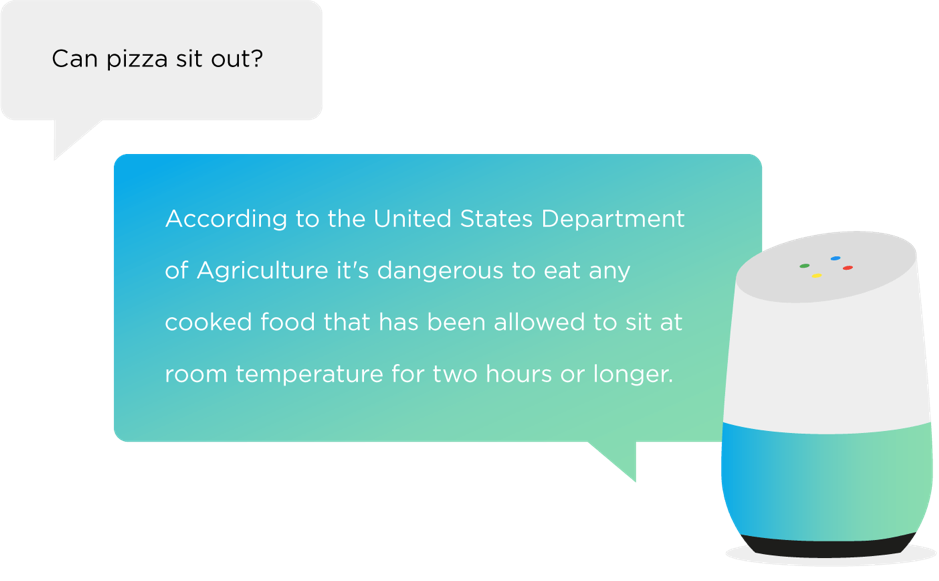
The answer to this question in Google Home is exactly 29 words and illustrates the point perfectly.
Another great way to create content that is suited to voice search is to beef out your FAQs. Think about the type of questions your customers are asking and create a whole page dedicated to answering them. When structured correctly, these questions and answers in FAQs have a much better chance of being found in voice search.
Summary
So, those are my top three tips for optimising for voice search. There is actually a strong correlation between all three and that all comes down to writing better content for your audience. Voice search is growing. According to AdWeek, 67 million voice-assisted devices will be in use in the U.S. by 2019. That’s a huge number of search queries that you need to be optimising for. Follow these three steps above and you will have taken huge strides towards optimising your content for voice search.
Resources
As I mentioned earlier in the post, there are plenty of posts out there with even more tips on optimising for voice search. I wanted to take this opportunity to share with you the three that I think are the easiest to implement and that will have the biggest impact. Here are some great resources for you if you want to dig further into optimising for voice search:
https://backlinko.com/voice-search-seo-study
https://neilpatel.com/blog/seo-for-voice-search/
https://blog.hubspot.com/marketing/how-to-optimize-for-voice-search
https://searchengineland.com/seo-2018-optimizing-voice-search-288078
About the author: Gavin Hirst is a Brit working abroad. He is a copywriter, SEO and content marketing expert working for one of Auckland’s leading SEO agencies, Digital Hothouse in New Zealand. Outside of work, Gavin is a keen golfer and is passionate about the outdoors – hence the move to NZ! Connect with Gavin on LinkedIn or with Digital Hothouse on Twitter and keep up to date with all the latest digital marketing news and trends in NZ and across the world.
